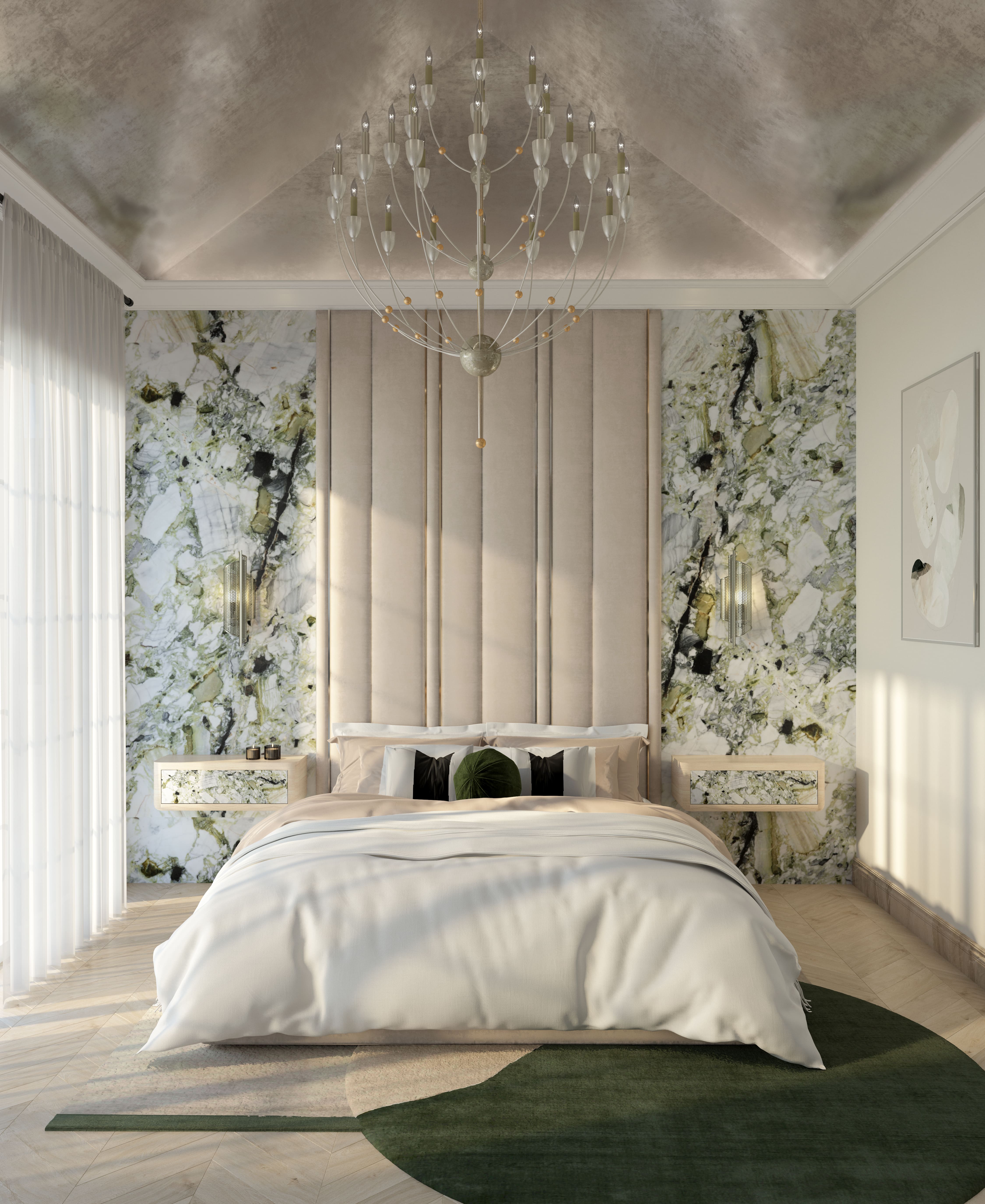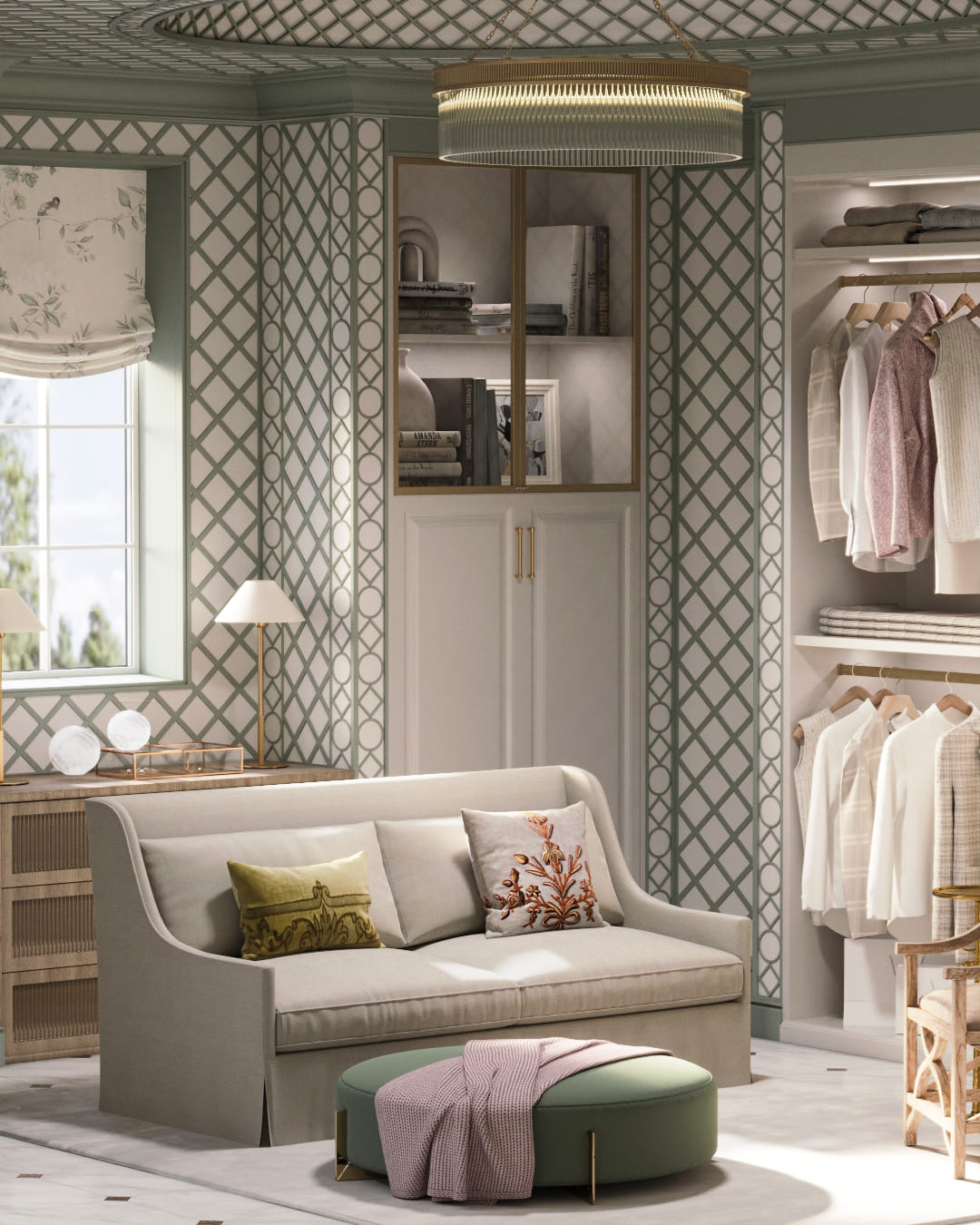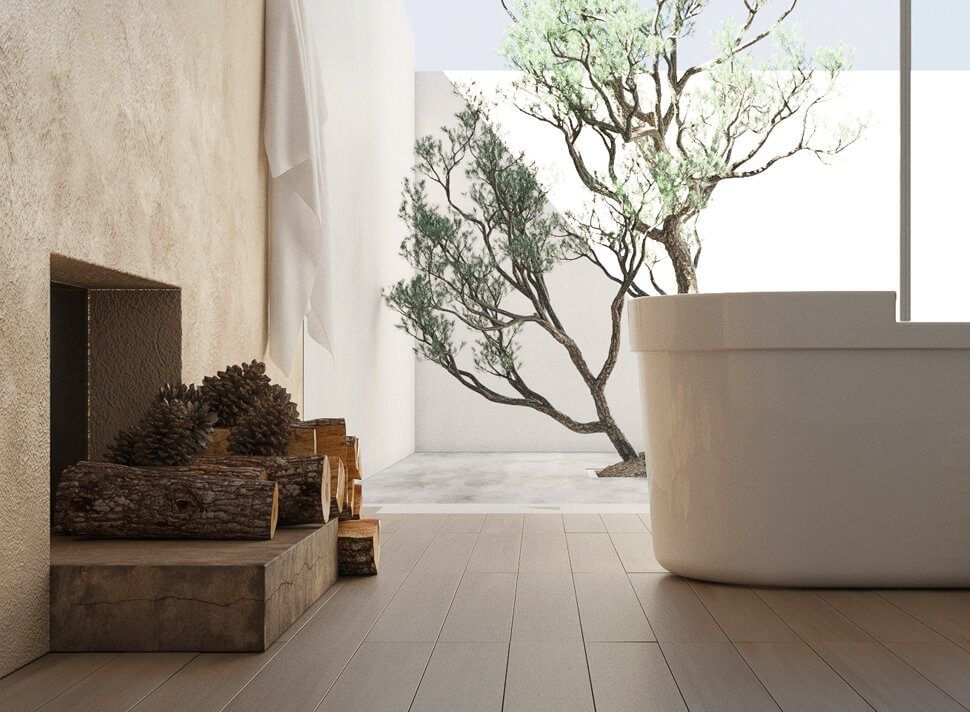The Definition and Benefits of Rendering in Interior Design
Introduction to Interior Design Rendering
Interior design is the art of creating functional and aesthetically pleasing interior spaces. It's a profession that blends creativity with technical knowledge to transform empty rooms into inviting, practical, and beautiful environments. To convey their ideas effectively, interior designers often turn to rendering, a powerful tool that brings designs to life visually and tangibly. In this comprehensive guide, we'll explore the definition and benefits of causing in interior design, shedding light on its crucial role in the design process.
Understanding Rendering in Interior Design
Rendering Defined
Rendering, in the context of interior design, refers to generating visual representations or images of interior spaces. These representations range from two-dimensional (2D) drawings to highly detailed three-dimensional (3D) images. The primary purpose of rendering is to help designers and clients visualize how a space will look once the design is implemented.
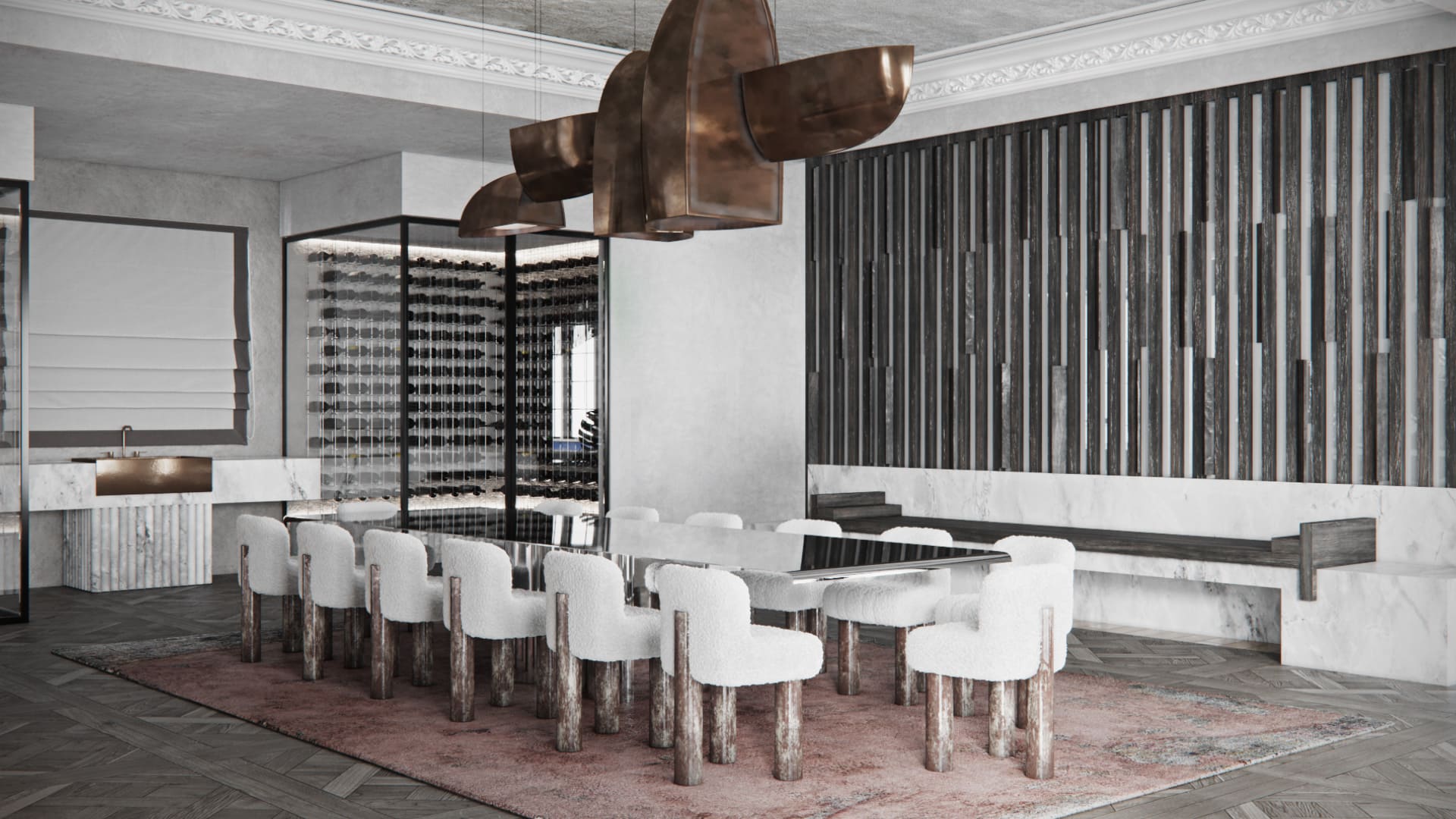
Image from Yousee Studio
Types of Interior Design Renderings
- 2D Renderings: These are flat, two-dimensional images that represent a space. They are often used for floor plans, elevations, and simple sketches. While limited in depth, 2D renderings are vital in conveying layout and design concepts.
- 3D Renderings: These renderings offer a more immersive and realistic view of interior spaces. They provide a sense of depth, scale, and spatial relationships that 2D drawings cannot achieve. 3D renderings interior design are invaluable for showcasing the look and feel of a designed space.
- Virtual Reality (VR) and Augmented Reality (AR) Renderings: These cutting-edge technologies enable designers and clients to immerse themselves in a virtual representation of a space. VR allows users to explore a fully 3D environment, while AR overlays digital elements onto the real world. These technologies provide an unprecedented level of interaction and understanding.
The Benefits of Rendering in Interior Design
Effective Communication
One of the primary benefits of rendering in interior design is effective communication. Designers often have a vision that can be challenging to articulate through words alone. Renderings bridge this communication gap by offering a visual representation that clients can easily understand. They bring design concepts to life, allowing clients to see the proposed space before construction or remodeling begins. Topic clarity reduces misunderstandings and ensures that everyone involved in the project is on the same page..
Exploring Design Variations
Renderings empower designers to explore different design variations rapidly. Instead of relying solely on imagination or hand-drawn sketches, designers can create multiple renderings to visualize various design choices. This flexibility is precious when working with clients who want to see different options before making decisions. It also allows designers to experiment with multiple color schemes, furniture layouts, and material choices to find the most compelling design solutions.
Solving Design Challenges
Interior spaces often have unique challenges, such as awkward layouts, limited natural light, or unusual architectural features. Renderings help designers tackle these challenges by allowing them to virtually test and refine design ideas. For example, a designer can use a 3D rendering to experiment with different lighting solutions to address a dark room's illumination issues. By identifying and solving design challenges in the virtual realm, designers can avoid costly mistakes during construction or renovation.
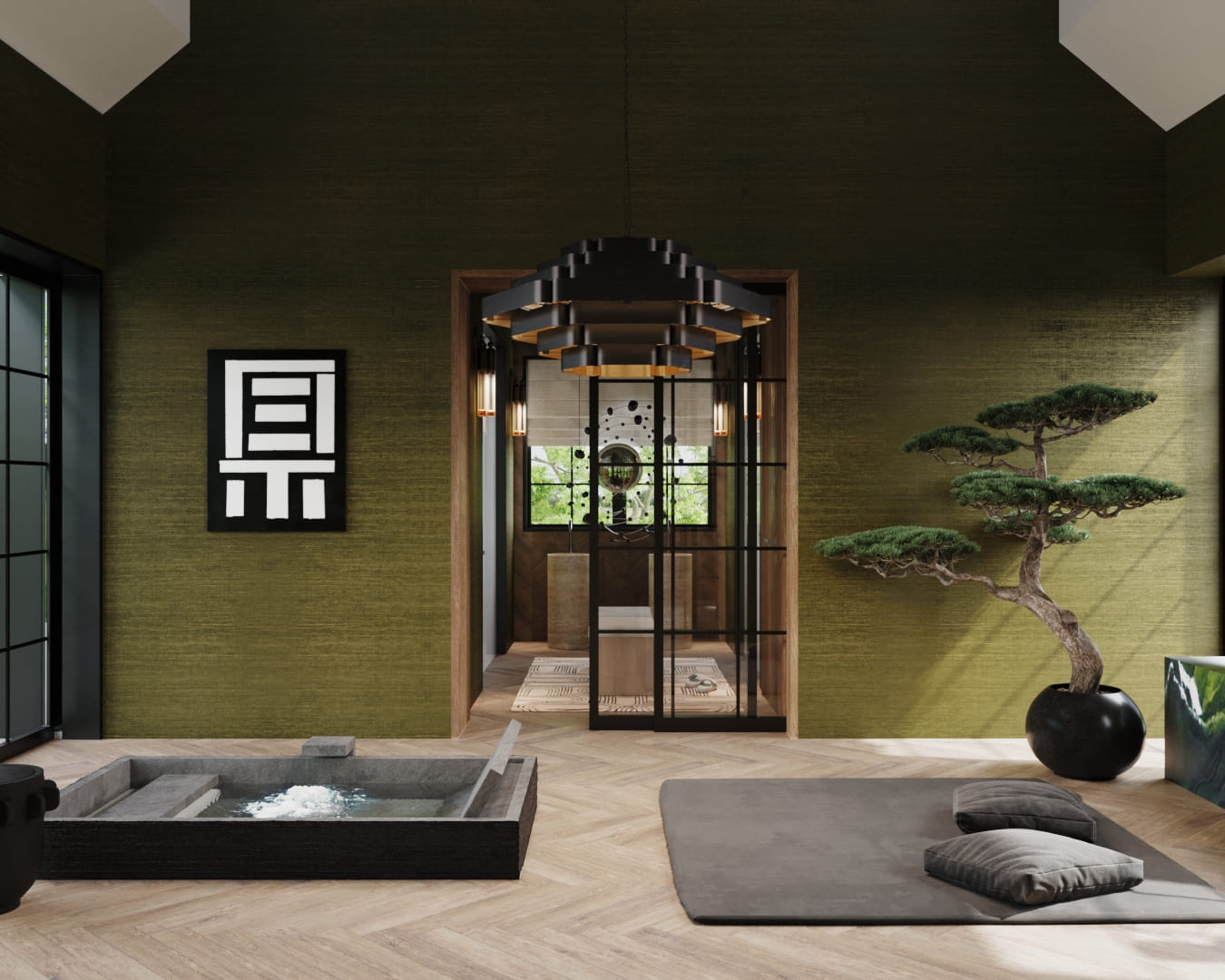
Image from Yousee Studio
Client Engagement and Confidence
Clients are more likely to feel engaged and confident in a project when they can visualize the result. Renderings provide clients a tangible connection to the design, helping them envision how their space will look and function. This increased engagement can lead to more enthusiastic and committed clients who are more likely to approve and proceed with the proposed design. Additionally, clients gain confidence in the plan when they see it brought to life through renderings, reducing the likelihood of last-minute changes or regrets.
Marketing and Presentation
Renderings also play a significant role in marketing interior design services and presenting design concepts to potential clients. High-quality, photorealistic renderings can be used in portfolios, websites, and marketing materials to showcase a designer's skills and style. Designers can use renderings to illustrate their design approach and past successes when meeting potential clients. This visual storytelling can make a compelling case for why a client should choose a particular designer or firm.
The Evolution of Rendering in Interior Design
Interior design rendering has come a long way, evolving alongside advancements in technology and design software. Traditionally, designers used hand-drawn sketches and physical models to convey their ideas. While these methods were valuable, they needed to be improved regarding detail, realism, and the ability to make changes quickly.
Traditional Hand-Drawn Renderings
Before the digital era, interior designers often created hand-drawn renderings and sketches to communicate design concepts. These renderings had a unique charm and conveyed the designer's artistic touch. However, they were time-consuming to produce and could not provide the level of detail and realism that clients often expect today.
Digital Rendering Software
The introduction of digital rendering software revolutionized the interior design industry. Designers could now create 2D and 3D renderings with greater precision and speed. Software like AutoCAD, SketchUp, and 3ds Max became essential tools for interior designers. These programs allowed for the creation of realistic 3D models and renderings, making it easier to convey design ideas accurately.
Realistic Textures and Materials
Advancements in rendering software have led to more realistic textures and materials in renderings. Designers can now apply textures like wood, fabric, or stone to virtual surfaces, mimicking their real-world counterparts. This level of detail allows clients to see the overall design and the tactile qualities of materials used in the space.
Virtual Reality and Augmented Reality
Integrating virtual reality (VR) and augmented reality (AR) into interior design has further pushed the boundaries of rendering. With VR, designers, and clients can immerse themselves in a virtual representation of a space, walking through it and experiencing it as if it were real. AR overlays digital elements onto the real world, allowing designers to superimpose virtual furniture or decor into a physical room, offering an interactive and engaging design experience.
Conclusion
In this first part of our exploration into rendering in interior design, we've defined rendering and highlighted its significance in the design process. We've discussed the various types of renderings, from 2D to virtual reality, and explored the benefits they offer, including effective communication, design exploration, problem-solving, client engagement, and marketing prowess. Additionally, we've traced the evolution of rendering from traditional hand-drawn sketches to advanced digital software and cutting-edge technologies like VR and AR.
Types of Interior Design Rendering
2D Renderings
Definition
2D renderings are two-dimensional representations of interior spaces. These flat images provide a simplified visual overview of a design. They are often used for creating floor plans, elevations, and basic sketches.
Applications
- Floor Plans: 2D renderings are commonly used for floor plans, which outline the layout of a space, including the placement of walls, doors, windows, and furniture. These plans provide a bird's-eye view of the space and are essential for understanding the flow and functionality of a design.
- Elevations: Elevations are 2D renderings that illustrate vertical views of walls, showing wall heights, window and door placements, and design elements like molding or cabinetry.
- Initial Sketches: Designers often use 2D renderings for initial sketches and concept drawings. These renderings help convey the basic design idea before moving on to more detailed representations.
Advantages
- Clarity: 2D renderings are straightforward to understand, making them suitable for conveying essential layouts and structural information.
- Speed: They can be created relatively quickly, making them a valuable tool for initial design discussions and concept development.
- Cost-Effective: 2D renderings are generally more cost-effective than their 3D counterparts.
3D Renderings
Definition
3D renderings, as the name suggests, are three-dimensional representations of interior spaces. They provide a more immersive and realistic view of a design, adding depth, scale, and spatial relationships.
Applications
- Realistic Visualizations: 3D renderings are ideal for creating highly realistic visualizations of interior spaces. They accurately capture details such as lighting, materials, and furniture placement.
- Client Presentations: Designers often use 3D renderings to present design concepts to clients. These renderings offer clients a lifelike preview of their space's appearance once the design is executed.
- Marketing and Portfolios: High-quality 3D renderings are valuable for marketing interior design services and building portfolios. They showcase the designer's skills and design style effectively.
Image from Yousee Studio
Advantages
- Realism: 3D renderings provide a level of realism that 2D renderings cannot match. They help clients visualize the final result with greater accuracy.
- Client Engagement: Clients are more engaged when presented with 3D renderings. They can explore the design from various angles and better understand the space.
- Design Exploration: Designers can experiment with different design variations more effectively in 3D, allowing for faster exploration of ideas.
Virtual Reality (VR) and Augmented Reality (AR) Renderings
Definition
VR and AR renderings represent the latest frontier in interior design rendering. They leverage cutting-edge technologies to create immersive and interactive design experiences.
Applications
- Virtual Walkthroughs: VR renderings enable designers and clients to experience a virtual walkthrough of an interior space. Users can "walk" through the design, exploring it as if physically present.
- Furniture and Decor Placement: AR renderings allow designers to superimpose virtual furniture and decor onto the real world using devices like smartphones or tablets. This technology helps clients visualize how specific items will fit into their space.
- Interactive Design Reviews: Designers and clients can conduct interactive design reviews in VR environments, making real-time changes and discussing design elements within the virtual space.
Advantages
- Immersive Experience: VR and AR renderings provide an unparalleled level of immersion, allowing users to interact with the design in ways that were once only possible in the physical world.
- Client Engagement: These technologies enhance client engagement by making the design process highly interactive and participatory.
- Realistic Evaluation: Clients can evaluate the design on a real-world scale, helping them make informed decisions about layout, furniture, and decor.
Hybrid Approaches
In many cases, interior designers use a combination of 2D, 3D, and VR/AR renderings to convey their ideas comprehensively. This hybrid approach leverages the strengths of each rendering type to create a well-rounded presentation.
Applications
- Design Development: Designers may begin with 2D sketches and floor plans to lay out the initial concept. They transition to 3D renderings as the design evolves for a more detailed and realistic representation.
- Client Engagement: Presentations often start with 3D renderings to engage the client with an immersive experience. Designers can then supplement with 2D drawings or AR to discuss specific design details.
- Problem-Solving: Designers may use VR to explore potential solutions when design challenges arise. Clients can join these sessions to provide feedback in real time.
The Benefits of Rendering in Interior Design
Enhanced Communication and Visualization
Advantages of Rendering in Interior Design
One of the primary benefits of rendering in interior design is enhanced communication. Interior designers must often convey complex ideas to clients, contractors, and other stakeholders. While informative, traditional blueprints and 2D sketches can be challenging for non-professionals to interpret accurately.
3D renderings bridge this communication gap. They offer a highly visual and realistic representation of the proposed design, enabling everyone involved to visualize the final result more clearly. Here's how this benefit plays out:
- Client Understanding: Clients struggling to grasp design concepts from flat 2D drawings can easily understand and connect with 3D renderings. They can see how furniture and decor will fit into the space, assess the color palette, and understand the overall ambiance.
- Improved Collaboration: Contractors, architects, and other professionals working on the project can better understand the design intent through 3D renderings. This leads to smoother collaboration and ensures the design vision is executed accurately.
- Reduced Misinterpretation: The risk of misinterpretation or misunderstandings is decreased significantly; the deceased can see a realistic visual representation of the design. This leads to fewer design errors and project delays.
Informed Decision-Making
Advantages of Rendering in Interior Design
In the realm of interior design, making informed decisions is paramount. Every design choice affects the outcome, from furniture selection to material finishes. Rendering empowers both designers and clients to make these decisions with confidence.
Here's how rendering supports informed decision-making:
- Material and Finish Selection: 3D renderings provide a close-to-real-life view of materials and finishes. Clients can see how different options look in the context of their space, making it easier to select the most suitable ones.
- Furniture Placement: Placing virtual furniture in a 3D rendering allows clients to experiment with various arrangements and select the layout that best suits their preferences and lifestyles.
- Color Palette Evaluation: Clients can explore different color schemes in 3D renderings, enabling them to visualize how various colors interact and create different moods in the space.
- Design Iteration: Rendering software allows for quick and efficient design iteration. Designers can change the virtual design in real-time, and clients can provide feedback and request adjustments as needed.
Cost and Time Savings
Advantages of Rendering Advantages or Design
While creating high-quality renderings may require an initial investment in software and training, it can lead to significant cost and time savings throughout the interior design project.
- Reduced Rework: With 3D renderings, designers and clients can identify potential issues or design flaws early in the process. This prevents costly rework and design changes once construction has begun.
- Streamlined Decision-Making: The ability to visualize the design in 3D reduces the likelihood of costly mistakes. Clients can see exactly what they will get, minimizing the chances of dissatisfaction or costly alterations later on.
- Faster Approvals: When clients clearly understand the design from the beginning, they are more likely to approve it promptly. This keeps the project timeline on track, reducing delays and associated costs.
Image from Yousee Studio
Marketing and Presentation
Advantages of Rendering Advantages or Design
In today's competitive interior design industry, presentation matters. High-quality renderings are valuable marketing tools that can set designers apart from the competition.
- Impressive Portfolios: Designers can showcase their work in portfolios, websites, and marketing materials using stunning 3D renderings. These visuals demonstrate the designer's skills and style effectively.
- Client Attraction: High-quality renderings can attract potential clients and project collaborations. When clients see a designer's ability to bring concepts to life, they are likely to choose that designer for their projects.
- Effective Client Presentations: Designers can use renderings to conduct compelling client presentations. Walking clients through a 3D visualization of their project creates a memorable and persuasive experience.
Sustainability and Environmental Impact Assessment
Advantages of Rendering Advantages or Design
Sustainability is a growing concern in interior design, and clients increasingly seek environmentally friendly design solutions. Rendering can be a valuable tool for assessing the environmental impact of design choices.
- Material Life Cycle Analysis: With 3D renderings, designers can calculate the environmental footprint of different materials and finishes. This data allows clients to make sustainable choices.
- Energy Efficiency Simulation: Rendering software can simulate the energy performance of interior spaces, helping clients optimize lighting, heating, and cooling for energy efficiency.
Challenges and Considerations in Interior Design Rendering
While rendering offers a plethora to interior designers, it's essential to acknowledge the challenges and considerations that come with this powerful tool. Understanding these aspects can help designers navigate potential hurdles and maximize the advanced rendering advantages of Proficiency.
Challenges in Interior Design Rendering
While rendering software has become more user-friendly over the years, mastering it requires a specific technical proficiency. Designers must invest time learning the software, exploring its features, and staying updated with new developments.
Considerations:
- Training and Education: Designers should consider investing in training programs or courses to enhance their rendering skills. Many software providers offer online tutorials and resources to help users become proficient.
- Collaboration: In cases where designers lack the necessary skills, collaborating with rendering specialists or 3D artists can be a viable option. This allows designers to focus on the creative aspects of the project while leaving the technical aspects to experts.
Hardware and Software Costs
Challenges in Interior Design Rendering
Investing in rendering software and the hardware required to run it efficiently can be a significant upfront expense for interior designers. High-quality rendering often demands powerful computers with advanced graphics processing units (GPUs).
Considerations:
- Budget Planning: Designers should include rendering software and hardware costs in their project budgets. While it might be an initial investment, the long-term benefits often outweigh the expenses.
- Cloud-Based Solutions: Some rendering software offers cloud-based rendering, which can be more cost-effective as it doesn't require a high-end computer. This can be a suitable option for designers on a tight budget.
Time-Consuming Process
Challenges in Interior Design Rendering
Creating detailed and realistic renderings can be time-consuming. The time required for rendering depends on factors such as the complexity of the design, the level of detail, and the rendering software's capabilities.
Considerations:
- Project Scheduling: Designers should factor in the time needed for rendering when creating project schedules. They can avoid rushing through the rendering process by allocating sufficient time, which could lead to subpar results.
- Batch Rendering: Some software allows batch rendering, which means designers can queue multiple renderings to process overnight or during non-working hours. This maximizes efficiency and minimizes disruptions to the workflow.
Managing Client Expectations
Challenges in Interior Design Rendering
While rendering can produce highly realistic visuals, managing client expectations effectively is crucial. Clients might assume that the rendered images are photographs of the actual space, which can lead to disappointment if the final result fails to match the renderings perfectly.
Considerations:
- Communication: Designers should maintain open and transparent communication with clients regarding the capabilities and limitations of rendering. Clearly explaining that renderings are digital representations can help manage expectations.
- Realism vs. Artistry: Designers should balance realistic renderings and infuse their creative vision. Sometimes, hyper-realistic renderings may need to align with the desired design concept.
Data Security and Privacy
Challenges in Interior Design Rendering
With the increasing use of cloud-based rendering services, designers must ensure data security and privacy. Storing design files and sensitive client information on cloud servers requires robust security measures.
Considerations:
- Secure Storage: Designers should choose reputable cloud services known for their security measures. Implementing strong passwords and encryption can further enhance data security.
- Client Consent: Designers should obtain client consent for storing project data on cloud servers and explain the security measures to protect sensitive information.
Conclusion
In this article, we embarked on a comprehensive journey through the world of rendering in interior design. We started by defining rendering and understanding its importance in the design process. We explored various rendering techniques, from 2D floor plans to photorealistic 3D renderings.
We then delved into the significant benefits that render rendering or designers, including enhanced communication, informed decision-making, cost and time savings, improved marketing, and sustainability assessments.
However, we also acknowledged designers' challenges and considerations when rendering their projects. These challenges include technical proficiency, hardware and software costs, time constraints, managing client expectations, and data security.
In conclusion, rendering has become an indispensable tool in modern interior design. It empowers designers to bring their ideas to life, facilitates better communication with clients and collaborators, and ultimately leads to more successful design projects. By understanding its advantages and challenges, interior designers can harness the full potential of rendering and continue innovating in their field.
Contact us at YouSee Studio for captivating 3D renderings and immersive virtual experiences.
Karen Spacey is a content writer and the author of this article.

